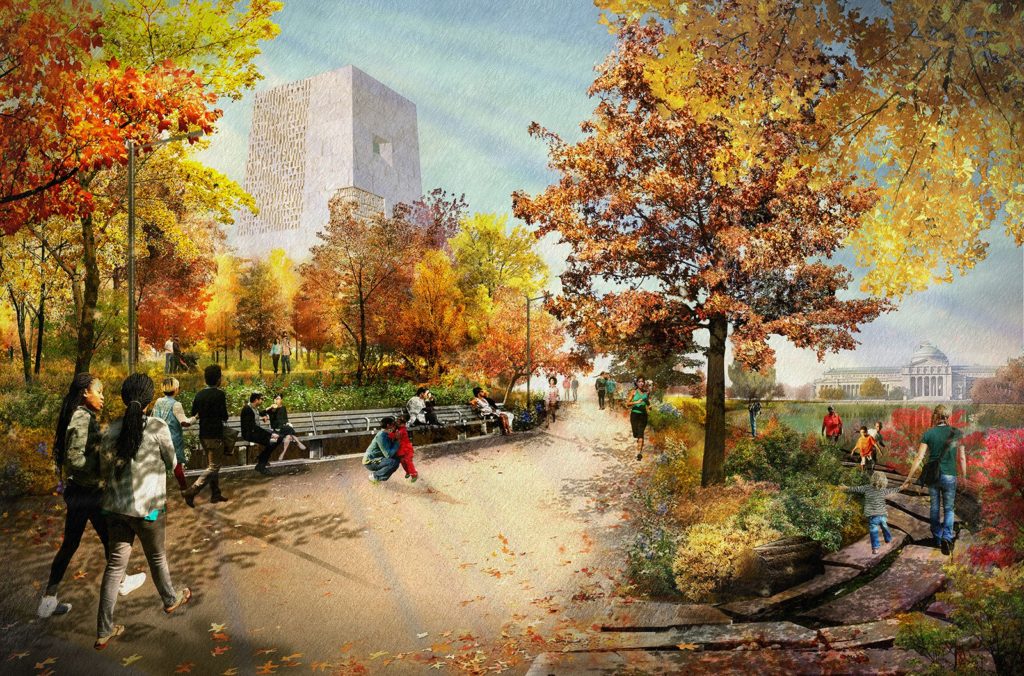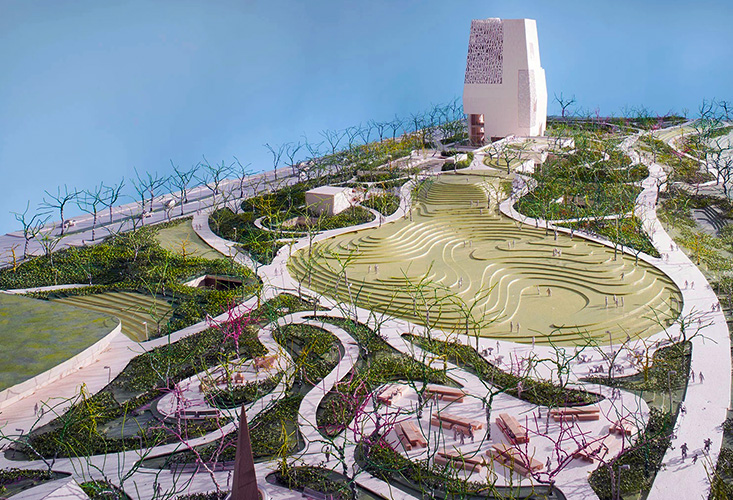January brought a flurry of planning activity for the Obama Presidential Center (OPC) along with heavy gusts of protest against the proposed development in Jackson Park. Both those favoring and those opposing the OPC proposal looked back to the 1893 World’s Fair and invoked Frederick Law Olmsted’s vision for the park after the Columbian Exposition to support their position.
On January 8, the Obama Foundation released new design plans for OPC space on the west side of the lagoon. The most significant update was the elimination of a proposed above-ground parking structure on the eastern edge of the Midway Plaisance. The revised plan calls for an underground parking lot within Jackson Park.

The west side of the lagoon in Jackson Park (near where the Horticulture Building stood in 1893) is the site of the proposed Obama Presidential Center campus. The Museum of Science and Industry (originally the Palace of Fine Arts of the 1893 World’s Fair) can be seen in the far right background.
On January 23, the University of Chicago student newspaper, The Chicago Maroon, published a detailed look at the controversy surrounding the plans. Emma Dyer’s article “Olmsted’s Vision Meets Obama’s Legacy: Faculty Object to OPC Design” explores the arguments for and against the proposed changes to Jackson Park. An open letter signed by 182 University of Chicago faculty members opposes the OPC development on several grounds including it violating Frederick Law Olmsted’s vision for the public space. [See our earlier post “Is Chicago about to ruin Jackson Park? asks the Cultural Landscape Foundation” for other opposition.]
The Obama Foundation responds that “the story of the park tells an interesting evolution in response to changing circumstances more than it represents the pure intentions of Olmsted and [collaborator Calvert] Vaux.” The Maroon story includes a map of Olmsted’s 1895 renovation of Jackson Park which shows “amenities similar to those proposed by the OPC plans.” Other university faculty members to not oppose the development, and one quipped that “Olmsted should not be fetishized.”
A map from the University of Chicago Special Collections, showing plans for public facilities similar to those proposed for the new Obama Presidential Center campus. [image from The Chicago Maroon.]
Architectural rendering for the lawn of the Obama Presidential Center, showing landscaped roof terraces and a public plaza on the western edge of the Jackson Park lagoon. [image from the Obama Foundation.]

